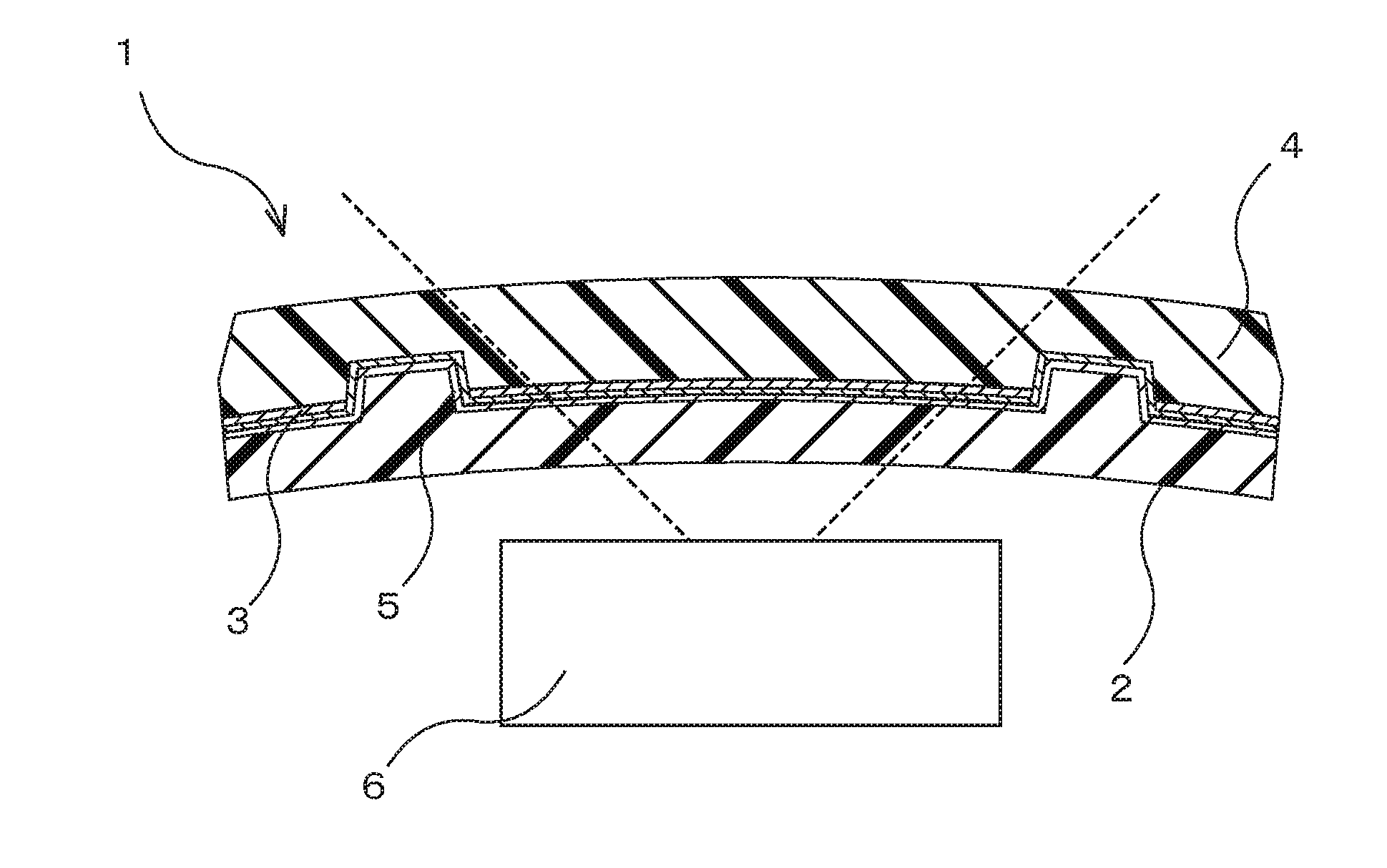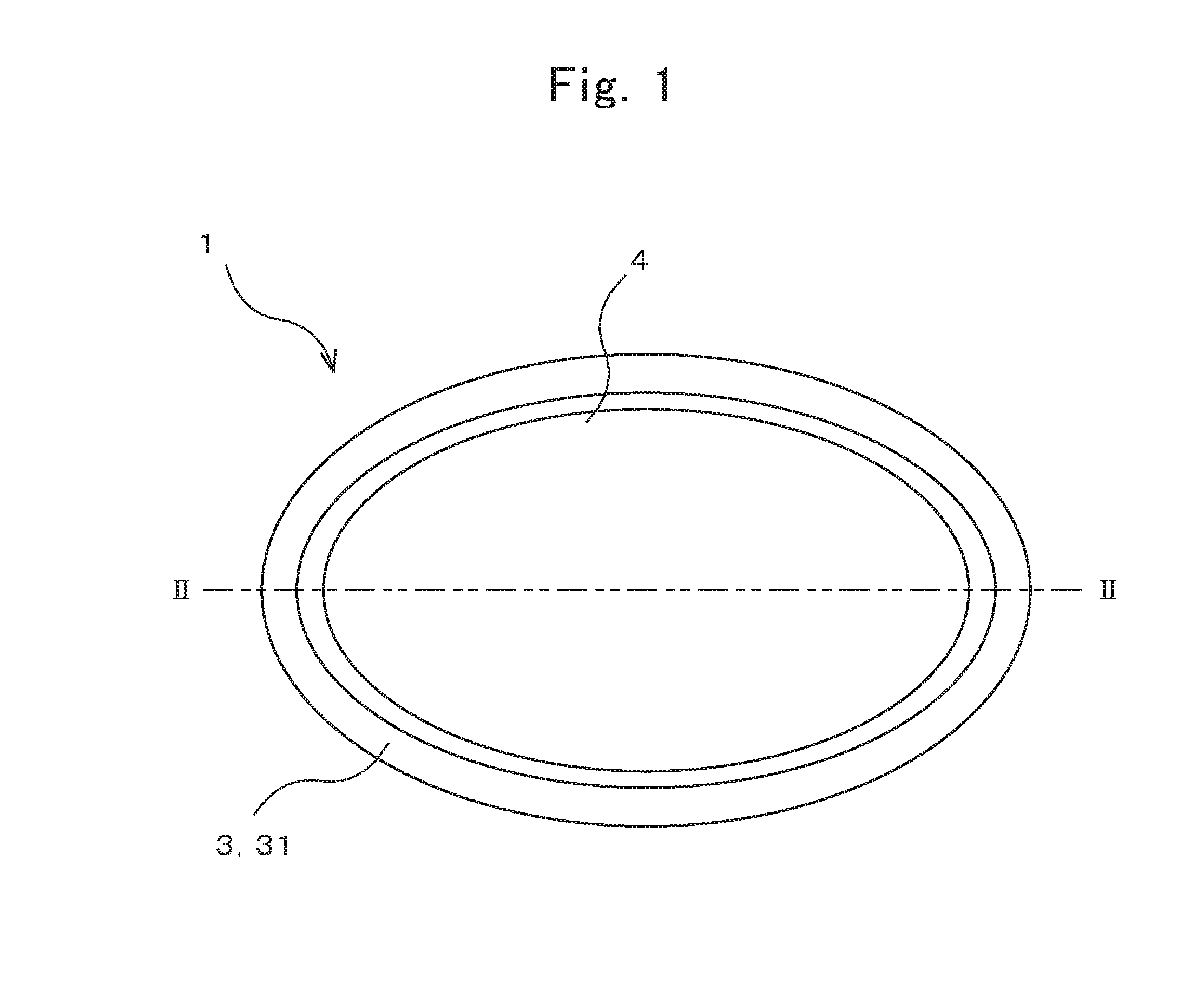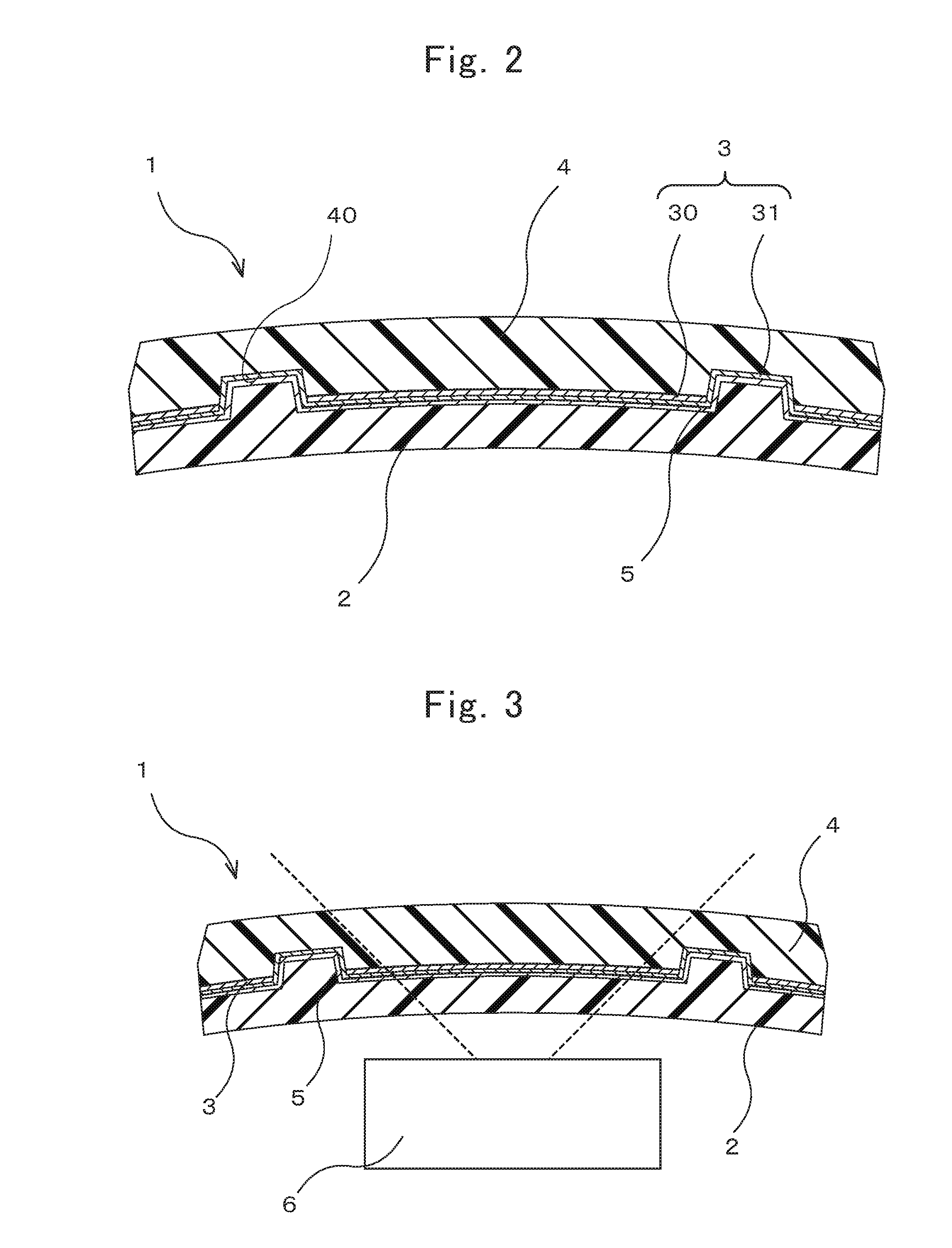Electromagnetic-wave transmitting cover
- Summary
- Abstract
- Description
- Claims
- Application Information
AI Technical Summary
Benefits of technology
Problems solved by technology
Method used
Image
Examples
embodiment
[0039]As an embodiment of the present invention, a cover of a millimeter-wave radar for vehicle is formed. In the embodiment, an example in which a cover of a millimeter-wave radar disposed on a vehicle grille is applied as an electromagnetic-wave transmitting cover is given. However, the present invention is not limited to the embodiment.
[0040]FIG. 1 shows a front view of a configuration of an electromagnetic-wave transmitting cover 1 according to the embodiment, and FIG. 2 shows a sectional view along a II to II line in FIG. 1. FIG. 3 shows a relationship between the electromagnetic-wave transmitting cover 1 and a millimeter-wave radar device 6 when the electromagnetic-wave transmitting cover 1 is used in a millimeter-wave radar.
[0041]Electromagnetic-Wave Transmitting Cover
[0042]The electromagnetic-wave transmitting cover 1 according to the embodiment, as shown in FIGS. 1 and 2, has a plate-like shape having a substantially elliptical outer shape. The electromagnetic-wave transmit...
PUM
| Property | Measurement | Unit |
|---|---|---|
| Angle | aaaaa | aaaaa |
| Length | aaaaa | aaaaa |
| Light | aaaaa | aaaaa |
Abstract
Description
Claims
Application Information
 Login to View More
Login to View More - R&D
- Intellectual Property
- Life Sciences
- Materials
- Tech Scout
- Unparalleled Data Quality
- Higher Quality Content
- 60% Fewer Hallucinations
Browse by: Latest US Patents, China's latest patents, Technical Efficacy Thesaurus, Application Domain, Technology Topic, Popular Technical Reports.
© 2025 PatSnap. All rights reserved.Legal|Privacy policy|Modern Slavery Act Transparency Statement|Sitemap|About US| Contact US: help@patsnap.com



